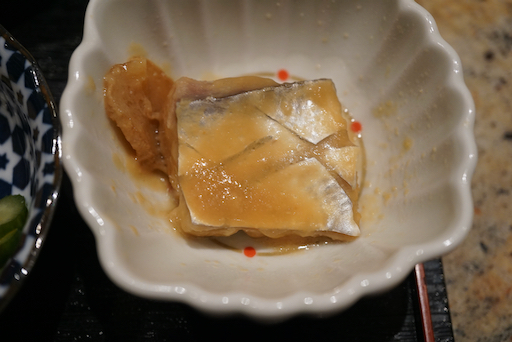Ingredients:
3 Japanese eggplant
2 tbs neutral vegetable oil
two small pieces of ginger, crushed with the side of the knife.
250ml Japanese dashi broth (I made this with my usual bonito and kelp dashi pack)
3 tbs soy sauce
3 tbs mirin
(Instead of soy sauce, I am using "shirodashi" 白だしand light colored soy sauce).
Directions:
Cut the eggplants in half lengthwise. Shallowly cut the skin in crosshatching pattern and then cut lengthwise again to make 1/4 eggplant.
Add the oil to a frying pan on medium flame and add the ginger for a few minutes until fragrant.
Add the eggplants skin-side down and fry for 3-4 minutes and turn over to fry both of the fresh sides for 2-3 minutes each,
Add the seasonings and broth (below), put on the lid and simmer for 3-4 minutes.
This is good eaten hot right after it is cooked but it can also be stored in the broth in a sealable container in the refrigerator. The stored eggplant can be eaten cold or heated up in the microwave.
This is usual salmon nanban. This one was really good since the quality of the salmon (from Whole foods) was good and I did not over cook it. I served this with sugar snap in salt broth スナップ豌豆の塩びたし.
Mr. and Mrs. Segawa of Tako Grill kindly gave us "kazunoko" herring roe 数の子. I prepared it as I described in my New Year dish tab. The half serving shown below was soaked in dashi broth with soy sauce and mirin seasoning. I marinated the other half serving in sake-lee and miso mixture or "kasu-miso" 粕味噌. Since this preparation will last longer than the one soaked in dashi broth we will eat it closer to the holidays.
I also served Spanish mackerel in miso sauce 鯖の味噌煮. (The red dots surrounding the mackerel are part to the decoration of the bowel not part of the preparation.)
This was a quite a good starter line up for the evening.




















